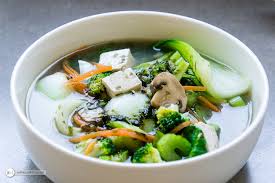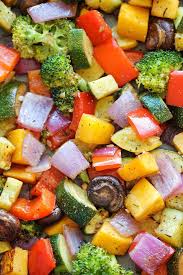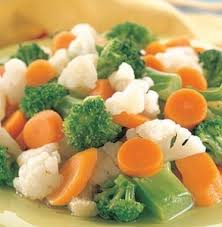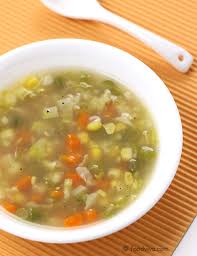This is a favorite recipe. But not in the traditional recipe format. You see, ‘wholesome’ has something to do with what ingredients you use but just as much or more to do with how you treat everything that you bring together.

I do this a lot so it has become a major feature. And like all things that we develop well, they become versatile because we live them as we experience our journey in life. Part of such versatility relates to the efficient simplicity that emerges over time.
So to be efficient and simple begin with two vessels: a smallish pot and a pan or something similar. To be really efficient (and also for healthy cooking) I will prepare a large pot of brown rice several days in advance and store it in the refrigerator, letting the starches convert and become resistant. Put the two pots on the stove top and get the rice.

Place your vegetable mix into the smallish pot and just cover them with water; then bring the pot to a boil. Lets talk some about the vegetables because it will take a little time for them to boil, so we’re not in any real hurry at this point.
When you are preparing a special meal for guests or with a friend, it is precious to spend time with the fresh whole vegetables while you talk with each other and slice or dice by hand together. The vegetables really seem to enjoy the visit, as well. And you want to keep the vegetables happy while you do this. Take care of the veggies and they will take care of you. Take time to look at them; admiring their colors and crispy freshness. Smile at them and think little prayers of gratitude for every living thing involved in the process of getting them to your home.

But for everyday cooking, you may elect to employ frozen vegetables so that you can get to work on time. In such cases though, never forget the gratitude and smiling affability.

Prepare the small pot with the vegetables and put it on to boil. Our whole generation has been taught to just barely wave some hot water over a vegetable and call it cooked. We are obsessed with al dente vegetables. Somehow (and we are brainwashed to be immune and resistant to any suggestion to the contrary) we feel superior to Grandma’s generation and their old timey ideas where they boil the vegetables into mush. I can say with certainty that the more we learn, the more Grandma’s old timey folk wisdom begins to shine.
In this recipe, we will cook the vegetables thoroughly (way past al dente but not into mush). After they are done we will pour all the water off. “Look at all those vitamins going to waste, money down the drain!” you will say to yourself, quite smug in your contemporary perspective on culinary health. But along with the vitamin water, you are pouring off the oxylates which combine with the sulfur in the vegetables and give you kidney stones. Feeling a little better about pouring the water off? Grandma’s generation could not afford hospital visits and her kidneys had to function on a budget.
So it will take some small amount of time to cook the vegetables properly and while you are doing that you can fire up the frying pan and melt a little coconut oil in the bottom. You are going to brown off the tofu (and/or tempeh) so squeeze all the water out of it that you can (so it won’t pop and sputter) and crumble it into the pan. Browning it just the right amount is kind of an art because you do want some crunch but just on the surface, not crispy through and through. For best probiotic health, the tempeh should not get too hot because there is bio-flora intermingled with the beans and grains. With any luck, the vegetables are done just as the tofu gets brownish. 
Pour the oxylated water off the veggies and dump them into the tofu pan. Fetch the resistant starch rice and put some into the pan (being sure to get some of the starchy glue along with it). Now dig out about half a container of natto and mix this with the rice and veggies (and about a quarter cup of well-water), bringing it to a gentle simmer. In this recipe you will season it now, if you use any (perhaps a minute dusting of turmeric and a dash of tamari). The starches in the rice will mix with the oil and water making a thin sauce which will become thickened by the natto.

Here is a good opportunity not to overcook anything because you will want the bio-flora in the tempeh and the fungus in the natto to still be alive, yet the food needs to be warm enough to eat. So strive for an artful balance in this.

Pour it into a bowl and enjoy a warm, wholesome soup that feeds the health and brings joy to the soul. Don’t forget the smiles and gratitudes. And rest for a few minutes after you do the dishes.
This is the basic platform for a lot of various specialties. We can explore further elaborations on this foundation (as well as discussions into the Philosophical Art of Wholesome Culinary Preparation) in further posts as time permits.
